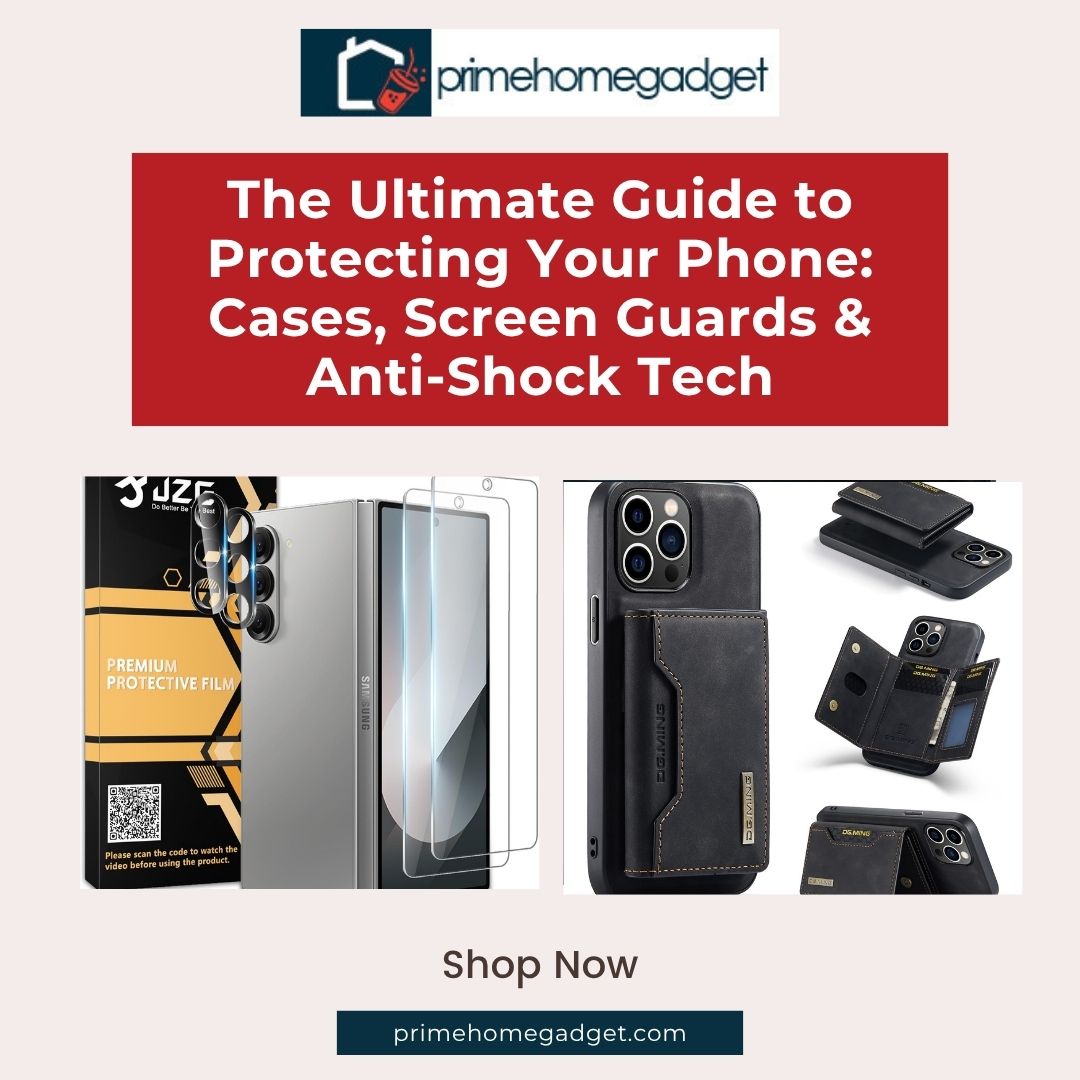We’ve all been there. That heart-stopping moment when your phone slips from your hand, tumbling toward the ground in what feels like slow motion. Your stomach drops, and you brace yourself for the dreaded crack. According to recent studies, Americans break over 50 million phone screens annually, costing billions in repairs and replacements. But here’s the good news: protecting your phone doesn’t have to be complicated or expensive. With the right combination of cases, screen guards, and anti-shock technology, you can keep your device looking pristine and functioning perfectly for years.
Let’s dive into everything you need to know about phone protection.
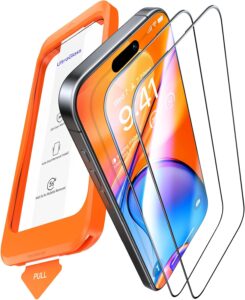
Why Phone Protection Matters More Than Ever
Modern smartphones aren’t just communication devices anymore. They’re our cameras, wallets, office tools, and entertainment centers rolled into one. The average flagship phone costs between $800 and $1,500, making it one of the most valuable items we carry daily. Yet, surprisingly, nearly 30% of smartphone users still don’t use any form of protection.
Beyond the financial aspect, there’s the environmental consideration. Every broken phone that gets replaced contributes to electronic waste. By protecting your device properly, you’re not just saving money but also making a more sustainable choice.
Understanding Phone Cases: Your First Line of Defence
Phone cases have evolved dramatically over the past decade. What started as simple plastic shells has transformed into sophisticated protective gear engineered with military-grade materials and advanced shock-absorption technology.
Types of Phone Cases and Their Protection Levels
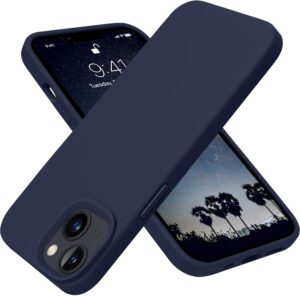
Slim Cases: Perfect for minimalists who want basic scratch protection without adding bulk. These cases typically offer protection from everyday wear and tear but won’t save your phone from serious drops. They’re ideal if you’re extremely careful with your devices and prioritize aesthetics.

Hybrid Cases: These combine hard polycarbonate backs with soft TPU (thermoplastic polyurethane) bumpers. They strike an excellent balance between protection and portability. Most hybrid cases can handle drops from 4 to 6 feet, making them suitable for average users who occasionally drop their phones.
Rugged Cases: Built for maximum protection, rugged cases often feature multiple layers, raised bezels, and reinforced corners. Brands like OtterBox and UAG have made their names in this category. These cases can withstand drops from 10 feet or more and often include port covers for dust protection. The tradeoff? They add significant bulk and weight.

Wallet Cases: Combining functionality with protection, wallet cases include card slots and sometimes cash compartments. While they offer decent drop protection, their main advantage is convenience. However, be mindful that carrying cards with magnetic strips near your phone could cause interference.
Key Features to Look For
When shopping for a phone case, consider these essential features:
- Raised Bezels: The lip around the screen and camera should be elevated to prevent direct contact with surfaces
- Corner Reinforcement: Most phone damage occurs at the corners during drops
- Grip Texture: A case that’s easy to hold reduces drop likelihood in the first place
- Wireless Charging Compatible: Ensure your case doesn’t interfere with wireless charging if you use this feature
- Button Tactility: Protective cases shouldn’t make buttons hard to press
Screen Protectors: Invisible Shields for Your Display
Your phone’s screen is its most vulnerable component and the most expensive to replace. Screen protectors have become incredibly sophisticated, offering protection that goes far beyond the plastic films of yesteryear.
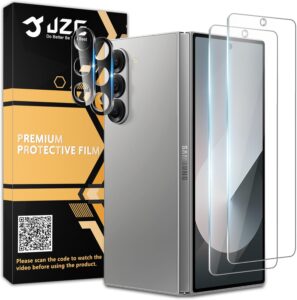
Tempered Glass vs. Plastic Film
Tempered Glass Screen Protectors are the gold standard for screen protection. Made from multiple layers of glass treated with heat and chemicals, they offer superior scratch resistance and impact protection. When a tempered glass protector breaks, it absorbs the shock that would otherwise damage your actual screen. Quality tempered glass protectors have a hardness rating of 9H on the Mohs scale, meaning they can resist scratches from most objects except diamonds and sapphires.
The installation process has also improved dramatically. Many premium protectors now come with alignment tools that make bubble-free application almost foolproof. Users consistently report that good tempered glass protectors feel virtually identical to the original screen, maintaining touch sensitivity and clarity.
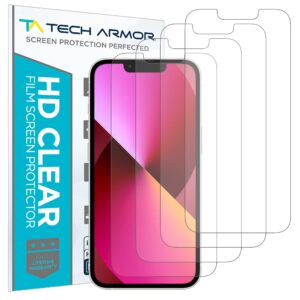
Plastic Film Protectors (TPU or PET) are thinner and more flexible. While they don’t offer the same impact protection as glass, they excel at preventing scratches and are self-healing to some extent. Minor scratches can disappear over time with heat. They’re particularly useful for curved screens where glass protectors sometimes struggle to adhere properly.
Privacy and Blue Light Options
Modern screen protectors go beyond basic protection. Privacy screen protectors use micro-louver technology to make your screen visible only when viewed straight on, protecting your information from prying eyes in public spaces. Blue light filtering protectors help reduce eye strain during extended use, particularly beneficial for people who use their phones before bed.

Anti-Shock Technology: The Science Behind Drop Protection
Anti-shock technology represents the cutting edge of phone protection. This isn’t marketing hype but actual engineering that dissipates impact energy to prevent damage.
How Anti-Shock Materials Work
Modern protective accessories use materials like D3O, Poron XRD, and air cushion technology. These materials remain soft and flexible during normal use but instantly harden upon impact, absorbing and dispersing shock energy across a wider area rather than concentrating it at the impact point.
D3O, originally developed for military and sports applications, has become increasingly common in phone cases. This smart material’s molecules flow freely under normal conditions but lock together when struck, creating a rigid protective barrier. After impact, it immediately returns to its flexible state.
Air cushion technology uses strategically placed air pockets in the corners and along the edges of cases. These pockets compress during impact, absorbing shock before it reaches your phone. You’ll often see this technology marketed as “airbag corners” or “air cushion technology.”
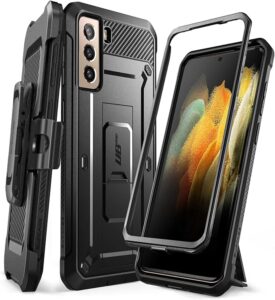
Military Drop Test Standards
When shopping for protective cases, you’ll often see references to MIL-STD-810G certification. This U.S. military standard involves dropping the protected device 26 times from various angles and heights onto concrete. While it’s become a marketing buzzword, genuine MIL-STD-810G certification does indicate serious protective capability.
However, take these ratings with perspective. A case that passes military drop tests offers excellent protection, but no case makes your phone completely indestructible. Extreme impacts, water damage (unless specifically rated for it), and other factors can still cause damage.
Combining Protection Methods for Maximum Safety
The most effective protection strategy combines multiple layers. Think of it as insurance for your insurance. Here’s the optimal setup:
- Start with a quality screen protector (tempered glass preferred)
- Add a protective case matched to your lifestyle and risk level
- Consider additional accessories like camera lens protectors for phones with protruding cameras
- Use a wrist strap or phone grip if you’re particularly drop-prone
This layered approach might seem excessive, but it works. Tech reviewers who test phones professionally use this exact setup to keep review units pristine through months of handling.
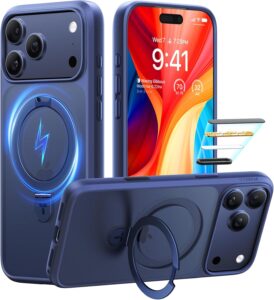
Making the Right Choice for Your Lifestyle
Your ideal protection setup depends on your specific situation. Construction workers need different protection than office workers. Parents with young children face different risks than solo users.
Ask yourself these questions:
- How often do you drop your phone? (Be honest!)
- Do you work in environments with dust, moisture, or impact risks?
- How much bulk are you willing to accept?
- What’s your budget for protection versus potential repair costs?
- Do you resell your phones or keep them until they die?
For most people, a mid-range hybrid case paired with a quality tempered glass screen protector offers the sweet spot of protection, usability, and cost-effectiveness.
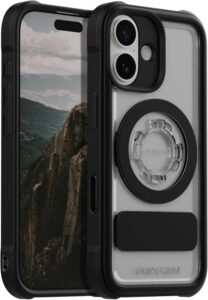
The Bottom Line: Protection is an Investment
Spending $30 to $60 on quality phone protection might seem unnecessary when you first unbox your beautiful new device. But compare that to the $200-plus cost of screen replacement or the $500-plus for back glass repair on modern phones. The math makes protection an obvious choice.
More importantly, proper protection gives you peace of mind. You can hand your phone to your child, toss it on the table, or pull it from your pocket without constant anxiety. Your phone becomes a tool you use freely rather than a fragile treasure you worry about constantly.
In the world of expensive, sophisticated smartphones, protection isn’t optional anymore. It’s essential. Choose wisely, protect thoroughly, and enjoy your device without fear. Your future self (and your wallet) will thank you.

